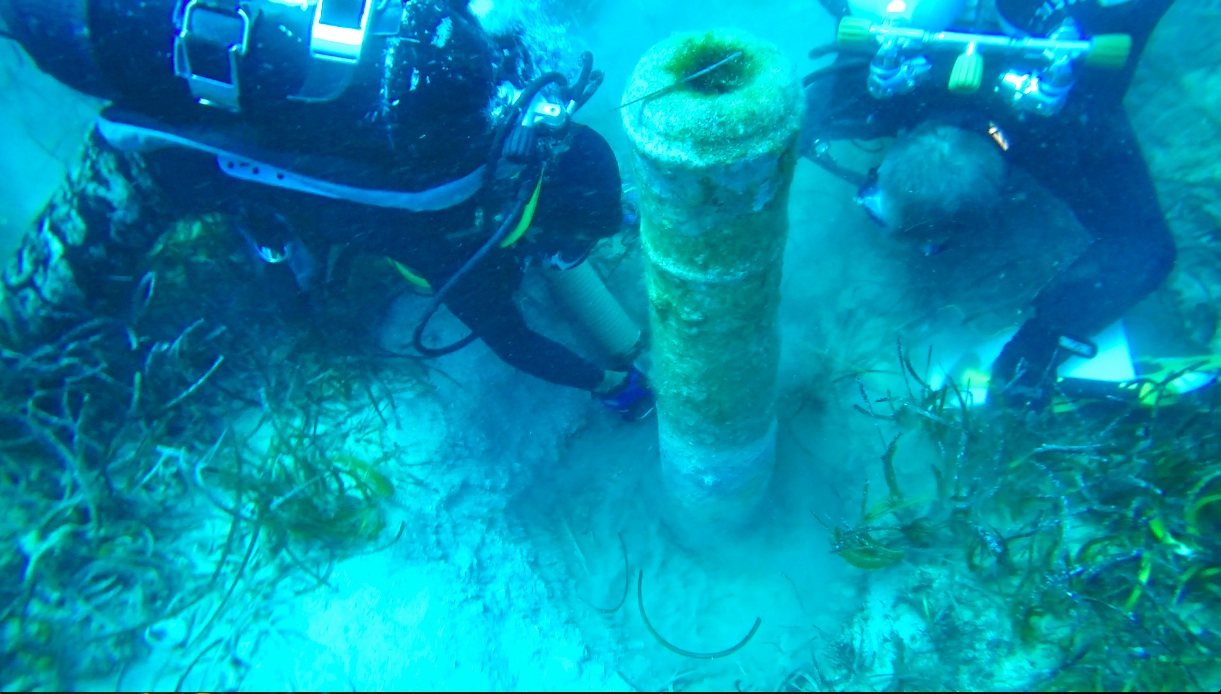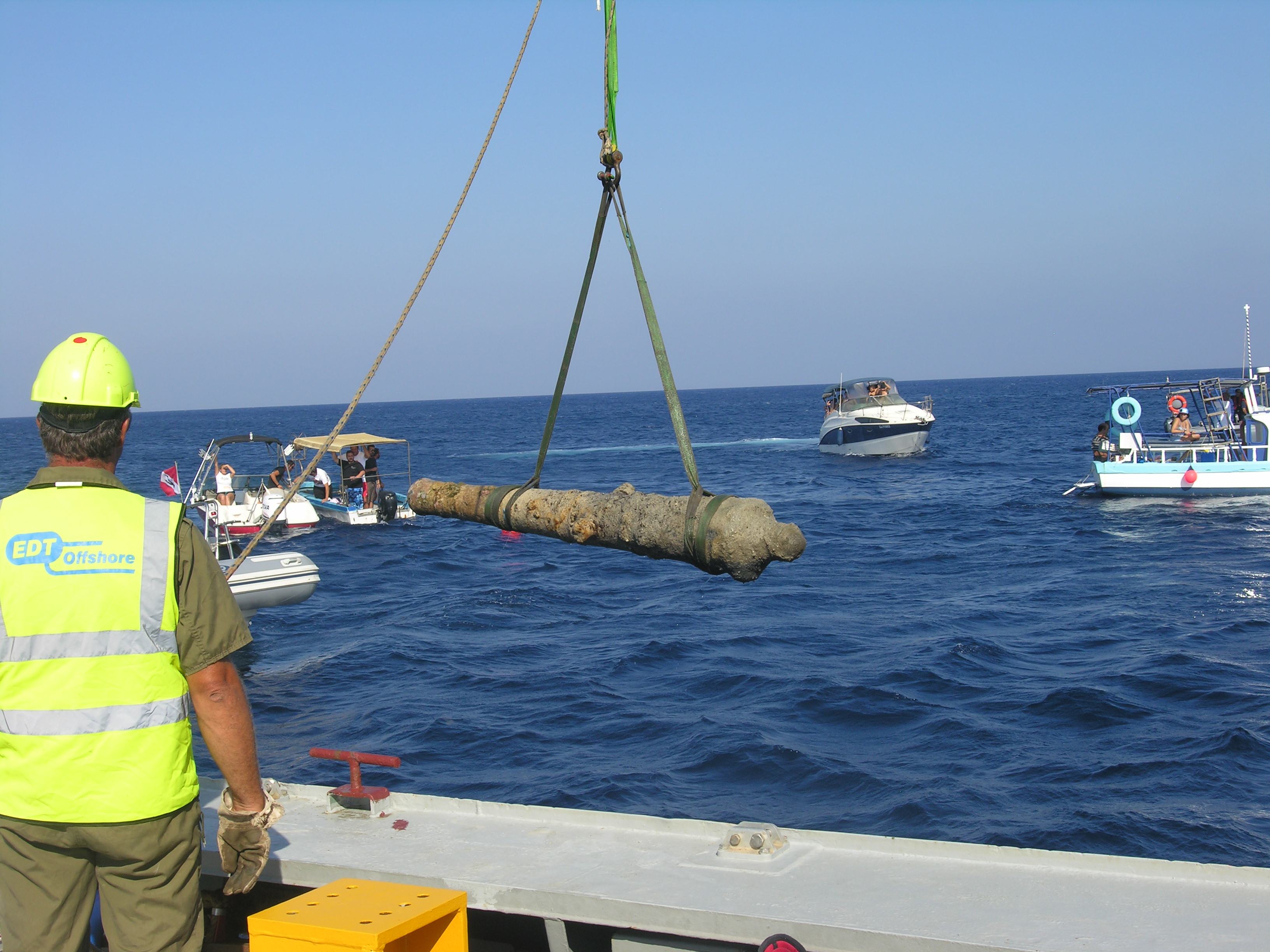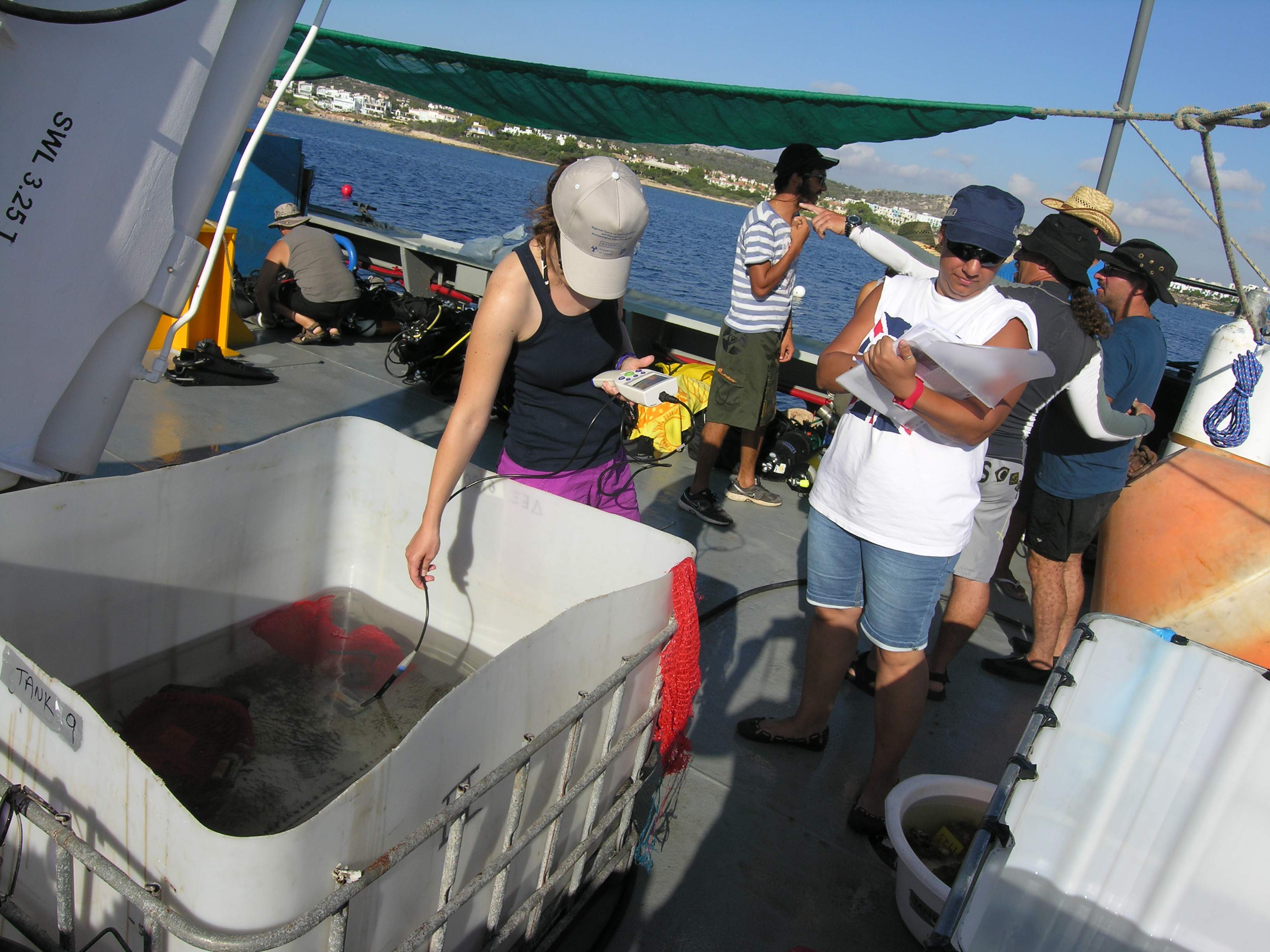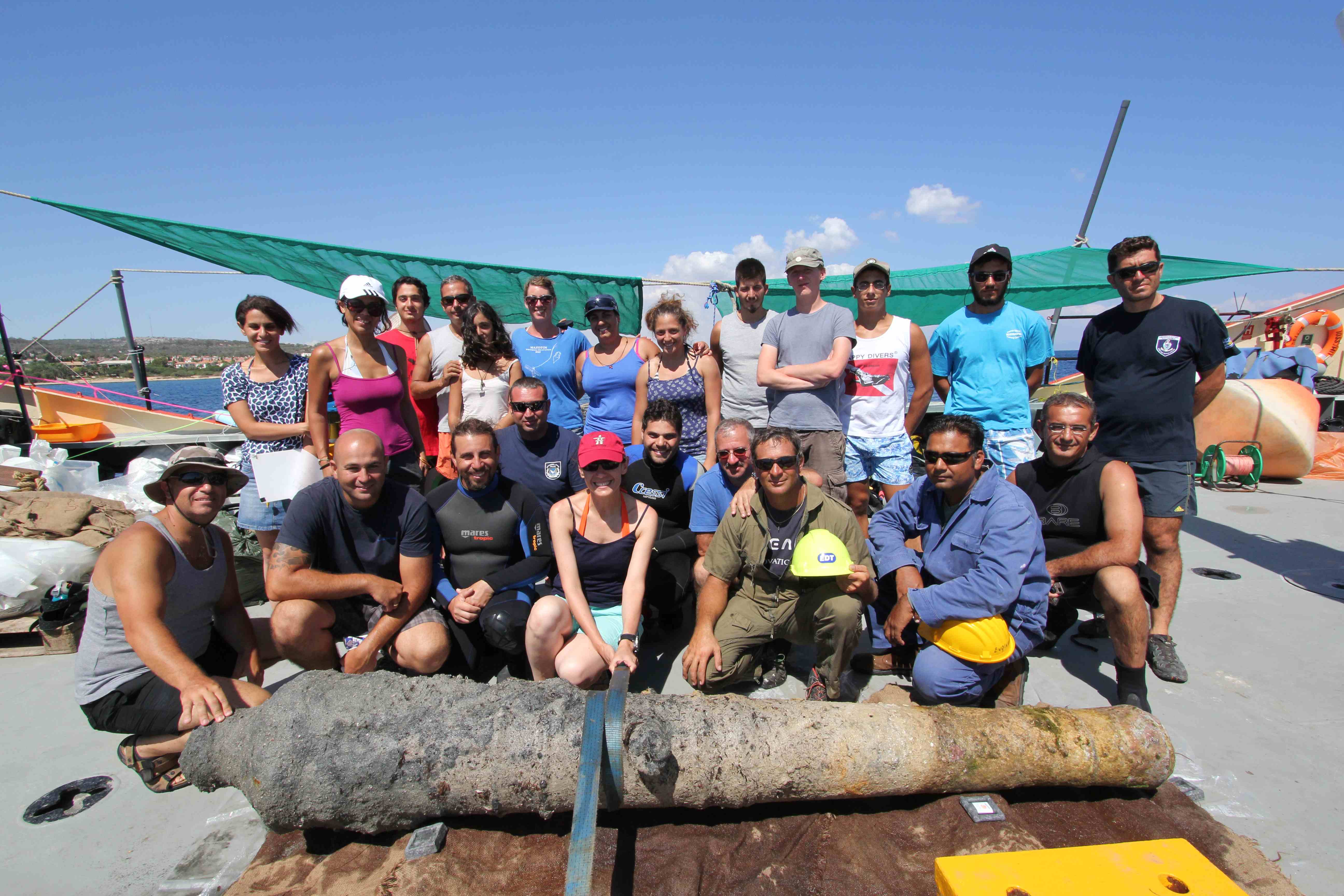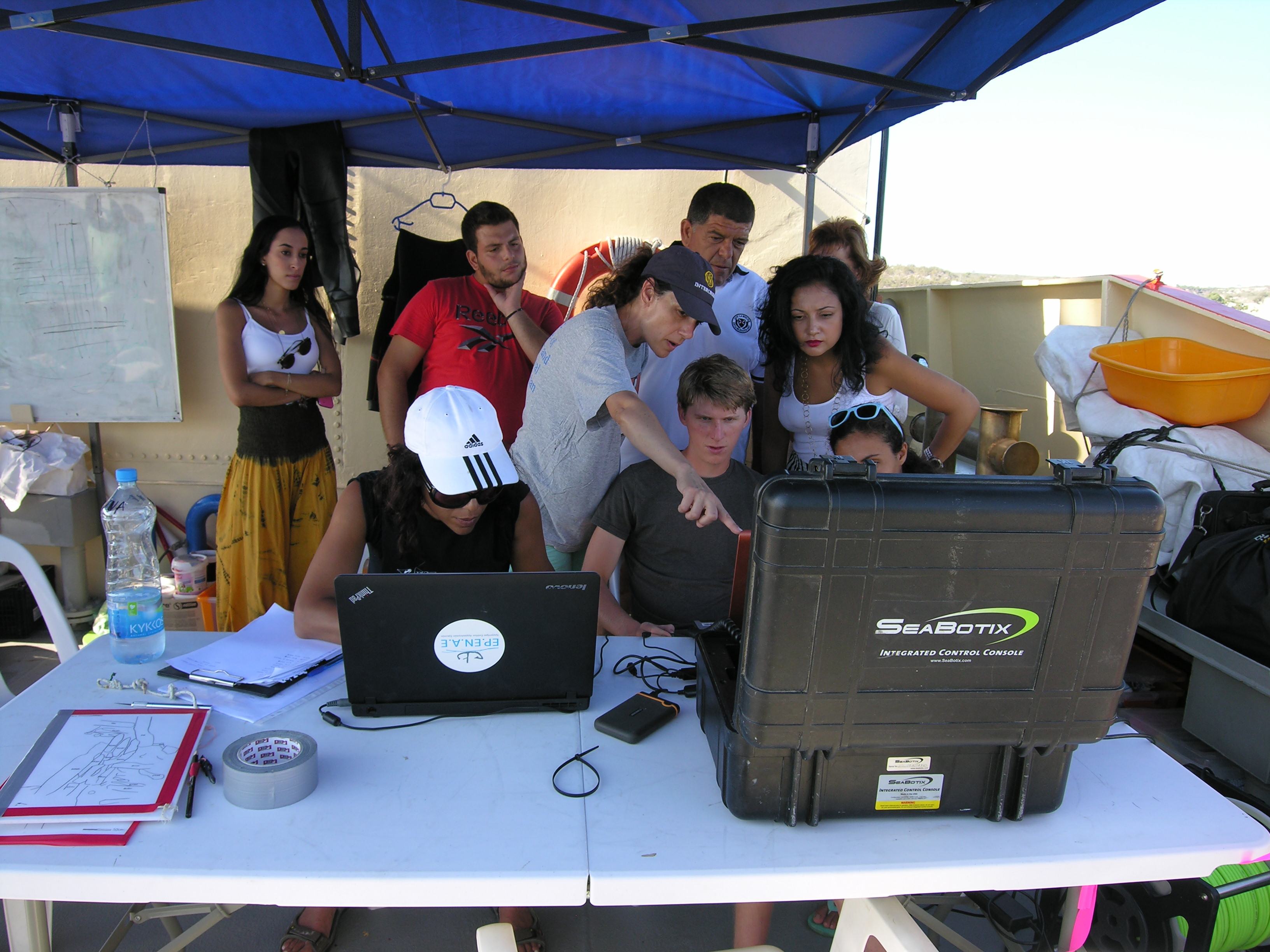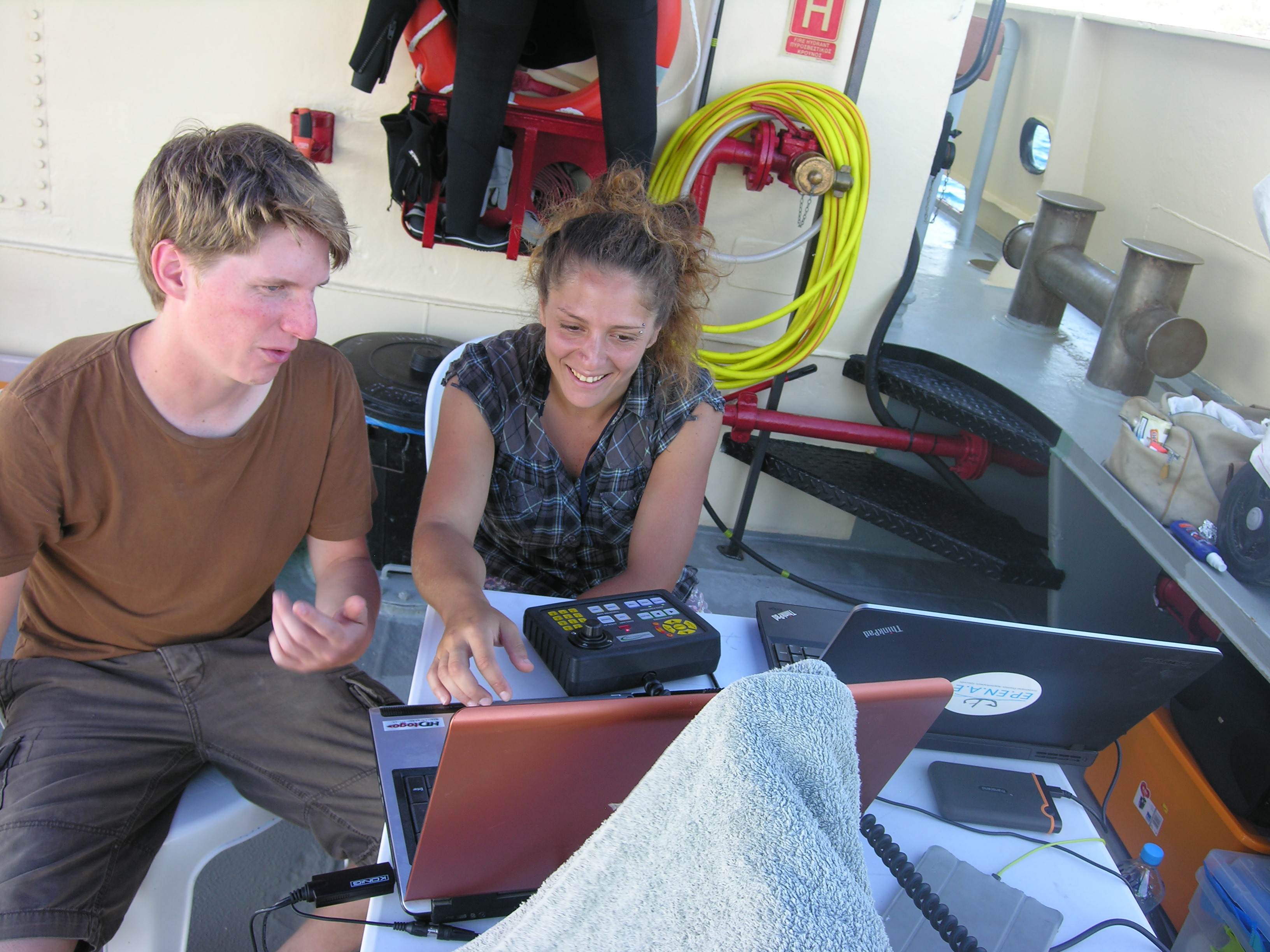|
It is a shipwreck of the ottoman period, located in the Nissia area, at the Famagusta cape, 28 metres below sea level. It is the only known shipwreck of that age in Cyprus, and one of the few that are being excavated in the Eastern Mediterranean. Consequently, its scientific research is important as it could shed light on issues related to shipbuilding techniques and naval activity in the Eastern Mediterranean, during that period.
The history of the shipwreck The shipwreck was known among divers since 1980s, when diving activity started to develop in the area. However, the official report at the DoA was made in 1992. Since then, several attempts have been made to survey the site, with no follow up: In 1994, a team from the Ephorate of Underwater Antiquities of Greece visited the site, while in 2004 the private company Aquatec, in collaboration with the German Institution DEGUWA made attempts to survey and protect the site. Gradually, during these years, knowledge of the site was widespread among the diving community. Due to its location, at a depth easily accessible to divers, and the 'friendly' waters of the area, it was transformed into an uncontrolled recreation spot. This resulted in its destruction and looting, and the subsequent destruction of valuable archaeological evidence. All the above, along with the fact high percentage of preservation of the wooden hull, which remained exposed to the natural deterioration factors was what led MARELab to launch a research programme on the site, in collaboration with the Department of Antiquities of Cyprus. The Nissia Shipwreck Project aims to document and protect the site, to lift selected parts of the hull, and to implement new methods of in situ preservation.
Surface survey The site was preliminary inspected in 2012. It stretches over an area of 24 x 11 metres, on a sandy seabed. It is surrounded by posidoneia fields with a number of antiquities lying beneath. Three cannons were documented as well as a notable number of bricks and free wooden sections of the hull.
|
||||||||
|
Excavation During the first excavation field season at the shipwreck, in September 2014, two trenches were opened. The first is located one in the area of the cannon at the NE of the site, away from the shipwreck's concentration, which was lifted and is now being conserved at the Conservation Laboratory of underwater archaeological material of the Department of Antiquities The second trench was opened in the east extremity of the main concentration, tangent to the rest two visible cannons of the shipwreck. The aim was to investigate the state of preservation of the ancient hull which is being preserved below the surface finds. Excavation revealed a small part of the side of the hull (frame timbers and hull planks), in a good state of preservation. During excavation, several movable finds were revealed which were documented and lifted. The finds include wooden rigging-elements (a deadeye), metal objects (pistol bullets and a number of still non-diagnostic metal concretions), ceramics (an amphora, open glazed vessels and closed vessels, some with incised decoration), glass tableware, bricks and stones. Further study of these objects could shed light on issues relating to the ship, its dating as well as on the daily life on board. All the finds were transferred to the Conservation Laboratory of the DoA were they are being conserved. In addition, selected timbers were lifted, samples of which were sent for dendrochronology and species analysis. The site was documented in collaboration with the Department of Civil Engineering and Geomatics, the Cyprus University of Technology (under the direction of Dr. Demetrios Skarlatos), using 3D digital photogrammetry methods. |
|
|
||||||
|
In situ preservation The Nissia Shipwreck Project also focuses on the study of the methods of in situ preservation of organic material on two axes (1) In situ preservation of the excavation trench and (2) Experiments for the preservation of organic material on the seabed. (1) In situ preservation of the excavation trench Following the completion of the excavation, the trench was reburied using fine sand, geotextile and sandbags. The aim is to create an anaerobic environment which does not permit the development of wood corrosion factors (oxygen, currents, sea flora and fauna). (2) Experiments for the preservation of organic material on the seabed Experiments were conducted with modern wood as well as with sections of timbers from the shipwreck. Concerning the first case, three specimens of modern wood (cedar, oak and pine) were buried in various depths in the sand and were covered using different materials (sand, geotextile and a combination of the two methods). In the second case, a timber taken from the site was cut into two pieces: the first piece was transferred to the Conservation Laboratory for conservation, while the second was reburied in the position where it was located. The aim is to locate and evaluate the most effective conditions of in situ preservation of organic material (wood). For this purpose, future visits on the site have been planned for the systematic observation of the wood in both cases. |
|
|
||||||
|
Public Archaeology Nissia Shipwreck is widely known among the local diving community. Due to this diving activity for almost 35 years (by locals as well as by tourists), alternative ways of approach, signification and interpretation of the site have been gradually developed, which are not directly related with the scientific aspect of archaeology. Over the last few years, it has been acknowledged that the active participation of the local community in the archaeological work could highlight various issues related to the interpretation of an archaeological site. In this framework, one of the objectives of the project is to encourage the participation of the local community in the various phases of archaeological research. The attempts to approach the local community also aimed to increase awareness on issues related to the significance of underwater cultural heritage. As a result, communication and collaboration was gradually developed between the archaeological research team and the divers who had been visiting the site in the past. A characteristic example is that of Mr. Michalis Charalambous from Nicosia. Following personal communication with him, Mr. Charalambous returned to the Department of Antiquities three pistol bullets he had taken from the site years ago. |
|
|
||||||
|
Students' training The Nissia Shipwreck Project aimed to act as a platform for students' training. To that end, students from Cyprus as well as from abroad participated in the project and had the possibility to contribute actively in a shipwreck excavation and to have the unique experience of scientific work. |
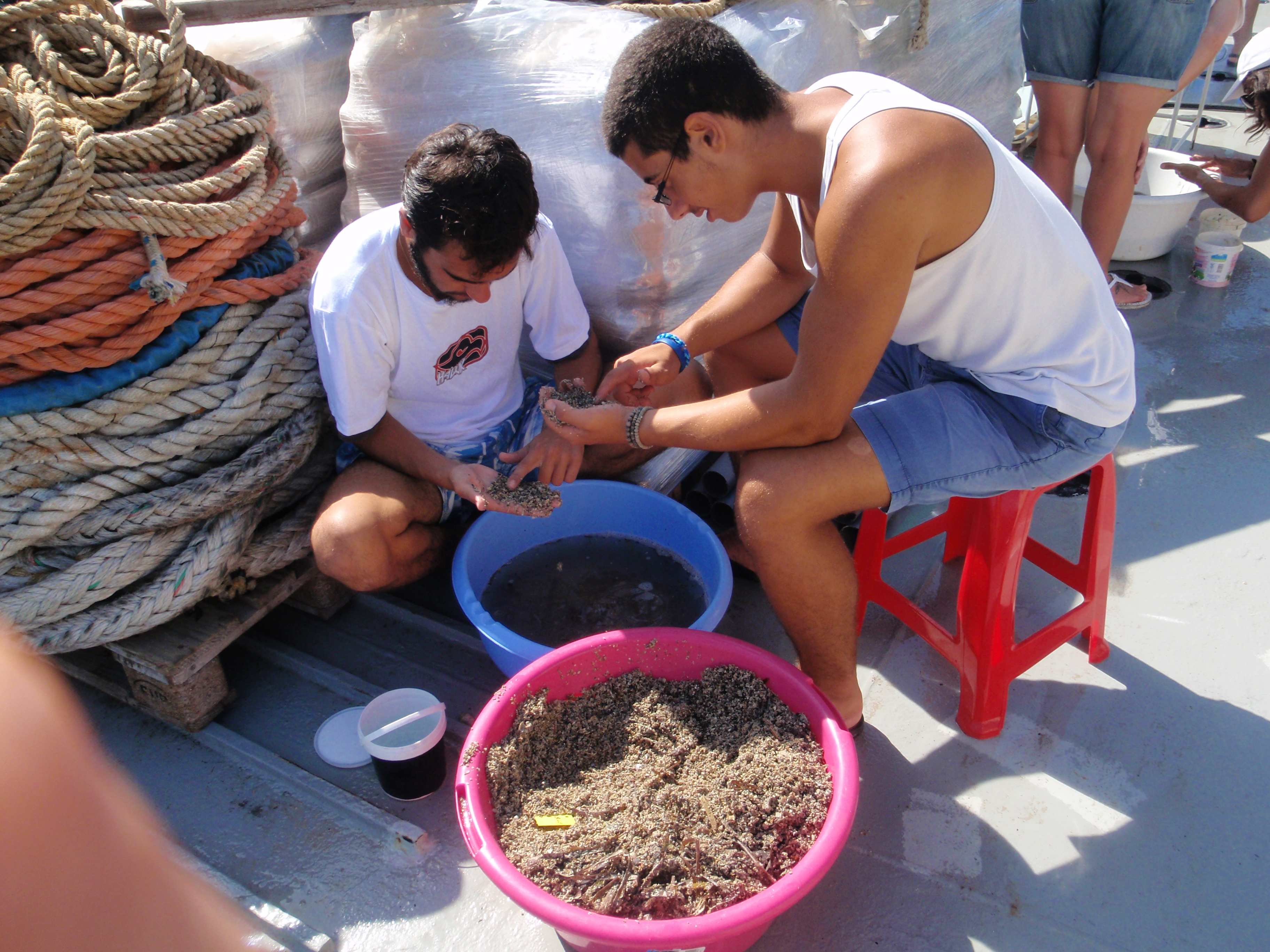 |
|
||||||
|
Collaborations Department of Civil Engineering and Geomatics, Cyprus University of Technology (CUT)
Sponsors Paralimni Municipality |



